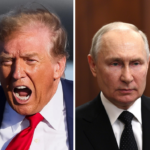
The EU tariff threat that had markets on edge just took a sharp turn. On Monday, the euro jumped sharply after U.S. President Donald Trump decided to delay his plan to impose 50% tariffs on European Union goods starting June 1.
This came after the EU asked for more time to negotiate a deal. The move sent a clear signal that the trade war may cool down—at least for now.

What the Delay Means for People and Markets
What does this mean for everyday people? Well, when tariffs go up, prices on imported goods usually rise. So, a pause on these tariffs means consumers and businesses in both Europe and the U.S. might avoid higher costs for now.
For currency traders and investors, the news sparked a big rally in risk-sensitive currencies like the Australian and New Zealand dollars, while the U.S. dollar continued to weaken.
Also Read Why Is the U.S. Futures Rally Making Wall Street Nervous This Time?
Dollar Weakness and Uncertain Future
The euro climbed 0.55% to $1.1418, reaching its highest since late April. The Australian dollar jumped 0.58%, and the New Zealand dollar soared by 0.75%. Even the British pound hit its highest level since February 2022.
The safe-haven currencies, like the Japanese yen and Swiss franc, weakened overall, reflecting a brighter mood among investors. But they still gained slightly against the U.S. dollar, which is struggling.
The dollar’s slump is tied not only to the tariff news but also to concerns over the U.S. government’s spending plans. Trump hinted that his sweeping tax cut and spending bill might change significantly in the Senate.
This bill, as it stands, could add nearly $4 trillion to the national debt over the next decade. This shift from a cautious to a growth-focused fiscal policy has investors worried. Chris Weston, a market expert, says the U.S. dollar is “on the path to a multi-year decline.”
Markets are taking a “wait and see” approach. Ray Attrill from National Australia Bank put it bluntly: while no one expects tariffs to really hit 50%, the path to the final deal is anyone’s guess. Trump’s sudden reversals on trade policy keep investors on their toes.
The 90-day pause on the tariffs ends on July 9, so eyes will remain glued to how talks between the U.S. and EU unfold. If the parties reach a good deal, global trade could stabilize, easing fears of a worldwide economic slowdown.
Also Read Gold Prices Ease as Trump Delays EU Tariffs, But Uncertainty Lingers












